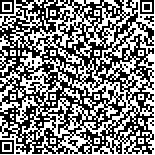| 引用本文: |
谭艳,喻嵘,周聪,黄柔,刘秀,向琴,陈昱彤.《古今名医临证金鉴·胃痛痞满》胃脘痛用药规律挖掘[J].湖南中医药大学学报,2021,41(10):1582-1586,1600[点击复制] |
|
| |
|
|
| 本文已被:浏览 2730次 下载 1442次 |
| 《古今名医临证金鉴·胃痛痞满》胃脘痛用药规律挖掘 |
| 谭艳,喻嵘,周聪,黄柔,刘秀,向琴,陈昱彤 |
| (湖南中医药大学, 湖南 长沙 410208) |
| 摘要: |
| 目的 通过探讨古今名医治疗胃脘痛的用药规律,为临床用药提供参考。方法 查阅《古今名医临证金鉴·胃痛痞满》中历代名医治疗胃脘痛有效的经验方,共选取中药复方265首,将265首复方中的单味中药输入至Excel 2013建立用药数据库,将数据导入古今医案云平台(V2.2.1),从单味药物频次分析、关联分析、药对分析、聚类分析等多角度挖掘治疗胃脘痛用药规律与特征。结果 共纳入76位名医治疗胃脘痛的处方,共265首,涉及中药252味,用药频次高达40次以上的中药为甘草、白芍、陈皮、半夏、茯苓、黄连、党参、枳壳、白术、川楝子、延胡索、香附、吴茱萸、当归。药物归经主要归属于脾胃经,药物功效主要为燥湿化痰、清热解毒、祛痰止咳、调和诸药、补脾益气、缓急止痛等。药物关联分析主要为健脾药与行气药组合。聚类分析挖掘的关联方剂有芍药甘草汤、二陈汤、左金丸、金铃子散。结论 《古今名医临证金鉴·胃痛痞满》中历代名医治疗胃痛以燥湿化痰、清热解毒、祛痰止咳、调和诸药、补脾益气、缓急止痛为主,治疗的重点在于祛湿、热、痰邪和补脾虚,且健脾药与行气药多配伍使用,符合胃痛治疗大法,为胃脘痛的临床用药提供参考与借鉴。 |
| 关键词: 胃痛 古今名医临证金鉴 用药规律 聚类分析 古今医案云平台 |
| DOI:10.3969/j.issn.1674-070X.2021.10.019 |
| 投稿时间:2020-07-01 |
| 基金项目:国家重点研发计划项目(2018YFC1704400,2018YFC1704300)。 |
|
| Medication Rules of Treatment of Stomachache in Ancient and Modern Doctors Clinical Experience Stomachache and Epigastric Fullness Volume |
| TAN Yan,YU Rong,ZHOU Cong,HUANG Rou,LIU Xiu,XIANG Qin,CHEN Yutong |
| (Hunan University of Chinese Medicine, Changsha, Hunan 410208, China) |
| Abstract: |
| Objective To explore the medication law of treating stomachache in ancient and modern times and to provide the evidence for clinical application. Methods By reviewing the effective prescriptions for treating stomachache by the famous doctors from ancient to modern times in Ancient and Modern Doctors Clinical Experience Stomachache and Epigastric Fullness Volume, 265 prescriptions were selected. The single medicine of these prescriptions were input to Excel 2013 to establish the medicine database. The data were imported into the ancient and modern medical case cloud platform (V2.2.1), and analyze the rules and characteristics of drug treatment for stomachache from multiple perspectives such as single-drug frequency analysis, correlation analysis, drug pair analysis, and cluster analysis. Results Among the 265 prescriptions from 76 doctors, 252 kinds of medicine were involved. The using frequency greater than 40 times respectively were Gancao (Glycyrrhizae Radix Et Rhizoma), Baishao (Paeoniae Radix Alba), Chenpi (Citri Reticulatae Pericarpium), Banxia (Pinelliae Rhizoma), Fuling (Poria), Huanglian (Coptidis Rhizoma), Dangshen (Codonopsis Radix), Zhiqiao (Aurantii Fructus), Baizhu (Atractylodis Macrocephalae Rhizoma), Chuanlianzi (Toosendan Fructus), Yanhusuo (Corydalis Rhizoma), Xiangfu (Cyperi Rhizoma), Wuzhuyu (Euodiae Fructus), Danggui (Angelicae Sinensis Radix). The meridian was mainly attributed to the spleen and stomach meridian, and the efficacy of the medicine was mainly drying dampness and resolving phlegm, clearing heat and detoxification, eliminating phlegm and relieving cough, harmonizing various drugs, tonifying spleen and Qi, relieving pain, etc. The drug association analysis was mainly a combination of spleen-invigorating and Qi-invigorating drugs. The related prescriptions mined by cluster analysis include Shaoyao Gancao Decoction, Erchen Decoction, Zuojin Pill and Jinlingzi Powder. Conclusion In Ancient and Modern Doctors Clinical Experience Stomachache and Epigastric Fullness Volume, the famous doctors of past dynasties mainly treat stomach pain by drying dampness and resolving phlegm, clearing heat and detoxification, eliminating phlegm and relieving cough, harmonizing various drugs, tonifying spleen and Qi, relieving pain. The treatment focuses on eliminating dampness, heat, phlegm evil and tonifying spleen deficiency. Moreover, spleen strengthening drugs are used in combination with Qi promoting drugs, which is in line with the treatment method of stomach pain and provides reference for the clinical medication of epigastric pain. |
| Key words: stomachache Ancient and Modern Doctors Clinical Experience medication rules cluster analysis ancient and modern medical cases cloud platform |
|

二维码(扫一下试试看!) |
|
|
|
|




